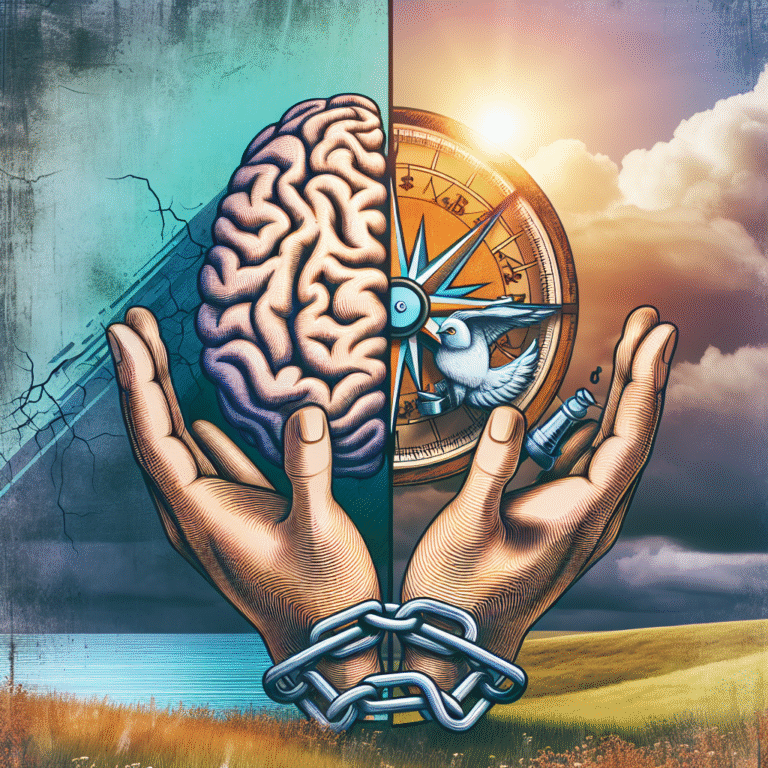
Introduction
Every day, countless individuals experience the unsettling reality of being stalked. The shadows of harassment can creep into our lives, turning what once felt safe into a world of fear. Yet, amidst this trauma, there are profound stories of resilience and empowerment. In this article, “Survivor Stories: Overcoming the Trauma of Stalking,” we delve into these narratives, explore strategies for healing, and offer insights that illuminate the path forward.
Stalking is not just an invasion of privacy; it is a complex psychological turmoil that can leave lasting scars. However, survivors can reclaim their voices and sense of agency. This article aims to provide survivors, advocates, and allies a comprehensive understanding of overcoming the trauma of stalking, reinforced with powerful stories and proven strategies.
Understanding Stalking: A Brief Overview
Before diving into survivor stories, it’s crucial to understand what stalking entails. Stalking is typically characterized by a pattern of unwanted and obsessive attention directed toward an individual. According to the National Center for Victims of Crime, nearly 1 in 6 women and 1 in 17 men have experienced stalking during their lifetime. These statistics underscore the urgency and importance of discussing the trauma that often follows.
The Emotional Toll: Recognizing the Impact
The emotional impact of stalking can be profound. Survivors often face anxiety, depression, and a constant sense of being threatened. This section will explore the psychological effects of stalking, highlighting the following:
- Increased Anxiety: Constant fear for safety can lead to severe anxiety disorders.
- Post-Traumatic Stress Disorder (PTSD): Many survivors experience PTSD, marked by flashbacks and heightened emotional responses.
- Isolation: Victims may withdraw from social settings, fearing that their stalker could intrude.
Understanding these impacts is the first step toward recovery and empowerment.
Survivor Stories: Personal Narratives of Triumph
Case Study 1: Maria’s Journey to Empowerment
With tears in her eyes, Maria recalls the harrowing experience of being stalked by a former partner. It began with innocent texts and phone calls but quickly escalated to unwanted visits. Feeling trapped, Maria turned her fear into action, creating a safety plan that included:
| Safety Measures | Description |
|---|---|
| Mobile Alerts | Maria set up alerts on her phone for when her stalker was nearby. |
| Support Network | A close circle of friends was informed about the situation and stood ready to help anytime. |
| Legal Action | With the help of an advocate, she obtained a restraining order. |
Through these measures, Maria not only found safety but also her voice. Her story illustrates how taking actionable steps can be a powerful form of reclaiming control.
Analysis
Maria’s journey reflects a common path many survivors may find themselves on. By implementing practical safety measures and engaging a support network, survivors can reclaim their sense of autonomy. This empowerment is a key theme in “Survivor Stories: Overcoming the Trauma of Stalking.”
Case Study 2: James’ Road to Recovery
James faced an uphill battle after an obsessive acquaintance began stalking him. The emotional toll was significant—he was unable to concentrate at work, and social outings turned to anxiety-riddled events. But James sought help:
- Therapeutic Support: He enrolled in counseling, where he learned coping mechanisms to navigate his trauma.
- Resilience Building: By participating in support groups, James discovered he was not alone, and this realization was transformative.
James’ story epitomizes the importance of mental health in the recovery process. The support of professionals and peers can provide immense benefits in overcoming the trauma.
Analysis
James’s narrative underscores a crucial insight: seeking therapy and engaging in community can alleviate the burdens of trauma. In “Survivor Stories: Overcoming the Trauma of Stalking,” the role of mental health resources is highlighted as essential in reclaiming one’s life.
Strategies for Overcoming Trauma
1. Establishing Safety Protocols
Creating a safety plan is vital. This may include changing locks, altering daily routines, or utilizing technology for safety.
2. Seeking Professional Help
Engaging with therapists specializing in trauma can provide survivors with coping mechanisms and emotional support.
3. Building a Community
Surrounding oneself with supportive friends and family can be an anchor in the recovery process. Support groups are also invaluable for sharing experiences in a safe environment.
4. Legal Measures
Understanding one’s legal rights is crucial. Restraining orders and police reports can provide additional layers of protection to survivors.
5. Self-Care: Prioritizing Mental Health
Engaging in self-care practices, such as mindfulness, yoga, and journaling, has proven beneficial for survivors. This is a personal journey that fosters emotional healing.
The Role of Community in Healing
Community support plays a pivotal role in the recovery journey. Connecting with others who share similar experiences can foster understanding and empathy.
Case Study 3: Sarah’s Advocacy Work
Sarah’s life took an unexpected turn when she became a stalking survivor. Instead of allowing trauma to define her, she transformed it into empowerment by establishing a local advocacy group. Sarah organized workshops focusing on educating people about stalking and helping other survivors navigate their paths.
Analysis
Sarah’s advocacy demonstrates that turning pain into purpose can be a significant part of healing. Engaging in community work not only helps others but can also empower survivors in their healing journeys, fitting perfectly within “Survivor Stories: Overcoming the Trauma of Stalking.”
Resources and Support Systems
Chart: Key Resources Available for Stalking Survivors
| Resource Type | Examples |
|---|---|
| Helplines | National Stalking Helpline |
| Counseling Services | Local mental health clinics |
| Legal Assistance | Pro bono legal services |
| Online Communities | Survivor support forums |
Conclusion: Embracing Resilience
The journey through trauma is often long and winding, but it is one filled with potential for healing and empowerment. The Survivor Stories: Overcoming the Trauma of Stalking serve as powerful reminders that recovery is achievable.
By sharing experiences, establishing safety measures, and engaging in community support, individuals can turn fear into strength. Stalked but not broken, survivors persist in crafting their narratives, proving that trauma can indeed be transformed into a story of resilience. Let us take inspiration from these stories of strength and take actionable steps toward creating a safer and more supportive environment for all.
FAQs
1. What is stalking, and how can I recognize it?
Stalking involves repeated, unwanted attention or contact that causes fear. Signs may include persistent calls, following, or unsolicited messages.
2. How can I create a safety plan?
A safety plan may involve changing your daily routines, informing friends and family, and utilizing technology like GPS trackers or alert apps.
3. Are there legal options for stalking survivors?
Yes, survivors can seek protective orders or restraining orders against their stalkers, providing legal barriers to unwanted contact.
4. How can I support a friend who is being stalked?
Listen without judgment, encourage them to document everything, and help connect them with appropriate resources and support systems.
5. Can therapy help in overcoming trauma from stalking?
Absolutely. Therapeutic support can provide coping strategies, emotional healing, and a framework for rebuilding one’s life post-trauma.
This comprehensive exploration of “Survivor Stories: Overcoming the Trauma of Stalking” presents an empowering narrative of resilience, urging survivors to take back their lives and find strength in their unique journeys.













